Latissimus Dorsi transfer
Massive tears of the posterosuperior rotator cuff (infraspinatus and posterior supraspinatus) leads to weakness and pain on overhead activities, such as lifting overhead, throwing, climbing and hammering. This is often disabling for heavy manual workers and active people. These movements are known as 'external rotation and abduction' and are controlled by the infraspinatus and posterior supraspinatus tendons, as well as the teres minor tendon.
Two large muscles attach to the humerus below the teres minor. These are Latissimus dorsi and Teres Major. Both can be used for transfer - either together or individually, depending on the surgeon preferences, muscle quality and excursion.
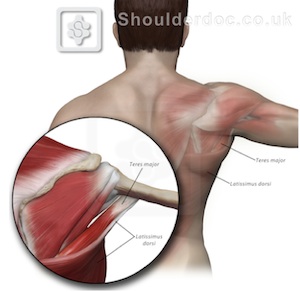
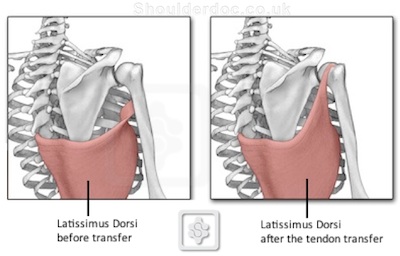
As mentioned in tendon transfer principles, not everyone is suitable for a transfer procedure and pre-operative planning is essential before proceeding to surgery. An MRI scan is most beneficial as it informs about the size of the tear, retraction of the tendons and the degenerative status of the attached muscles and quality of the shoulder joint. It also shows the quality and bulk of the lat dorsi muscle to be transferred. It is essential that the subscapularis is intact and functioning to ensure balancing of the force couples. Without this the transferred muscle will have nothing to work against and fail to function. An intact Teres Minor tendon leads to better results than if it is also ruptured.
Force couple between subscapularis at the front and infraspinatus at the back of the shoulder joint:
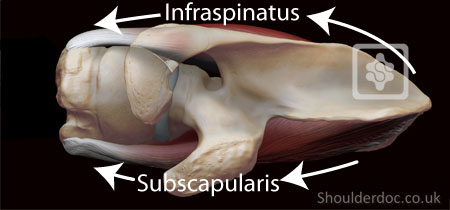
OPERATIVE TECHNIQUE:
The operation is performed under general anaesthesia with an interscalene block.
An incision is made at the top of the shoulder and the torn tendons are examined to assess for any chance of repair. Another incision is then made at the back of the shoulder, just behind the armpit. This is quite a large incision, used to access and mobilise the lat dorsi muscle fully. The lat dosi is then moved as high up the humerus as possible to exert a downward and external rotation force on the shoulder, compensating for the infraspinatus and suprapinatus muscles.
It is essential for the surgeon to get the tension of the repair right. This depends on skill, training and experience. Occasionally some additional tissue augmentation may be required. This may be tendon (tensor fascia lata) from the thigh area, or allograft tissue or a synthetic collagen mesh. The surgeon will discuss this with you before the surgery. The transferred tendon is then fixed to the bone with multiple strong suture-anchors.
Mobilised Latissimus Dorsi tendon:
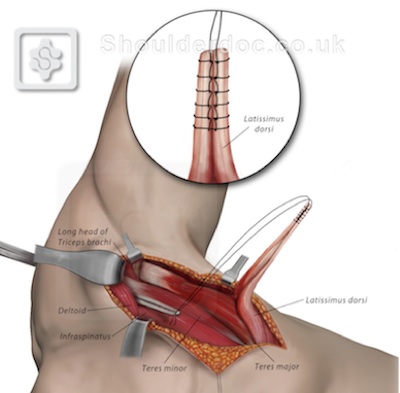
Latiisimus Dorsi tendon attached to the top and back of the humeral head:
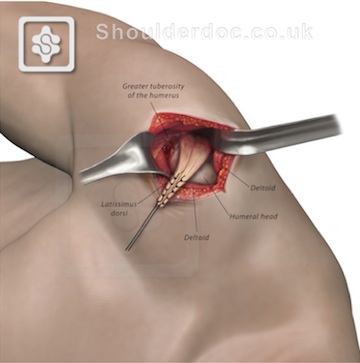
COMPLICATIONS:
These are rare, but weakness of the deltoid muscle is possible (less than 1%). This is usually temporary and resolves after a few months. Other complications include infection, stiffness and failure of the transfer. The incidence of these is less than 1%.
POSTOPERATIVE MANAGEMENT:
The shoulder is immobilised in an abduction or external rotation brace for three weeks (stable fixation due modern suture anchors), and passive range of motion exercises for abduction, flexion, and external rotation are begun on the first postoperative day. After four weeks, active range of motion exercises are begun in all planes including external and internal rotation. After twelve weeks, full loading is permitted.
See Living with a Sling and Post-operative protocol
RESULTS:
These depend on numerous factors, and optimal recovery can take over one year to achieve. Approximately 50-70% improvement is expected in most people after one year. An intact Teres Minor tendon prior to surgery generally leads to better results also.


